How the Legend of Zelda: Ocarina of Time gave us a timeless legacy
Charting not just one of the best Zelda games, but one of the greatest video games of all time
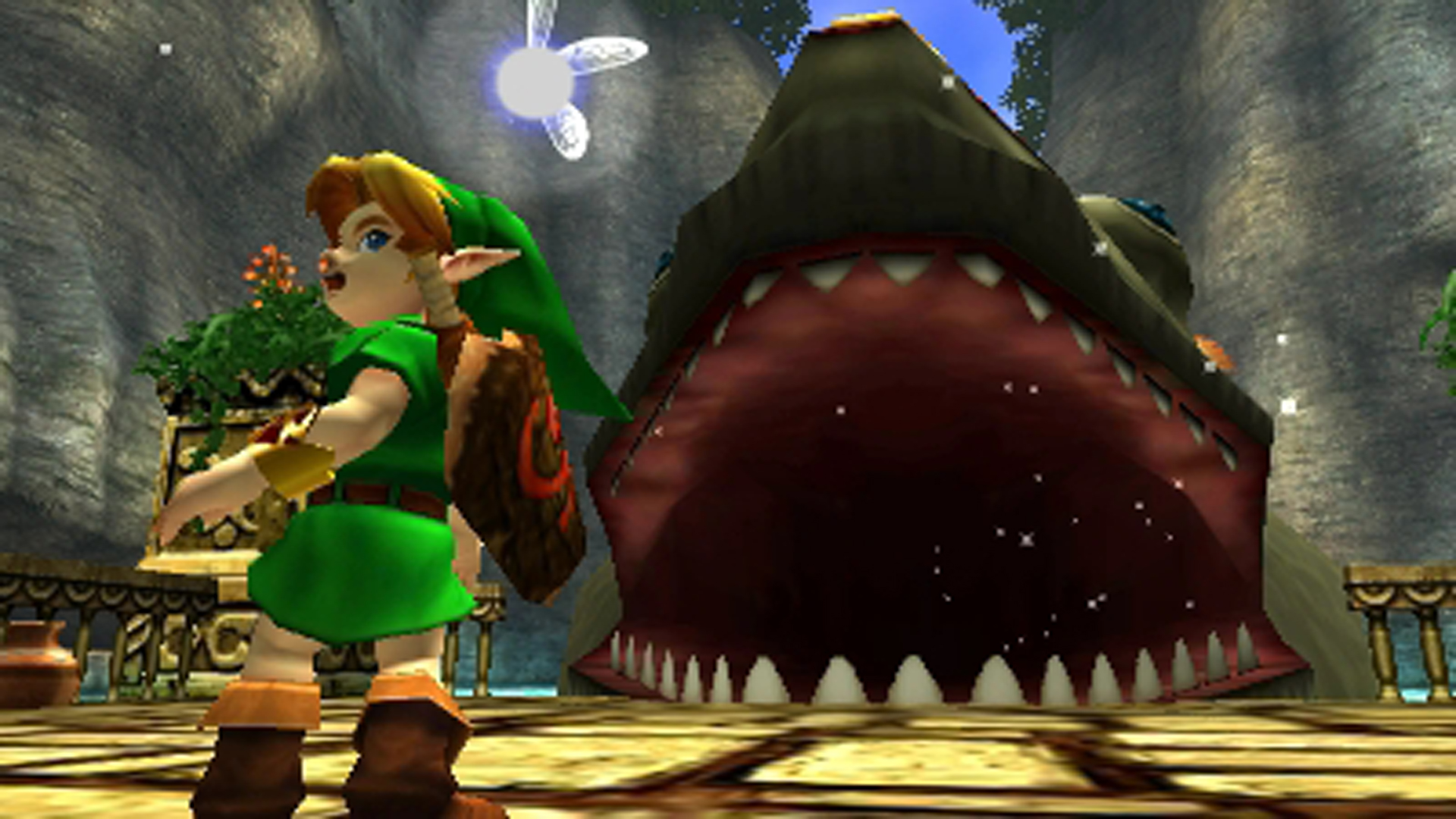
When all is said and done, a great game is measured simply by the journey you've taken - that moment when you reflect on the hours you've invested and ask yourself, 'Was it really worth it?' The best titles across the history of video gaming have all provided us with memorable adventures we’ve enjoyed taking a commanding role in, adventures we’ve felt a strange polarised sense of melancholy and pleasure at seeing the credits roll, enjoyed paying a revisit to once or twice, and have provided us with memories we will likely carry with us forever - because we were 'there', and we made them happen.
Perhaps these include something as simple as rescuing Peach from the clutches of Bowser, or maybe you remember specific parts of bigger pictures most fondly - like the time you caught your very first Pokémon and levelled it up enough to evolve, beat your best friend at a game of Street Fighter with a perfectly timed dragon punch, or crossed the finish line with mere moments to spare in OutRun.
The fact that Ocarina Of Time is a game bursting at the seams with memorable moments like these all wrapped up inside one epic adventure makes it not only one of the best Zelda games, but also one of the best games of all time. It's a game that takes you on a perfect adventure, one that anyone of any age can relate to: you're the hero, you scale the castle, defeat the villain and in doing all of that, restore peace to the land and become the stuff of legend.
Taking lessons
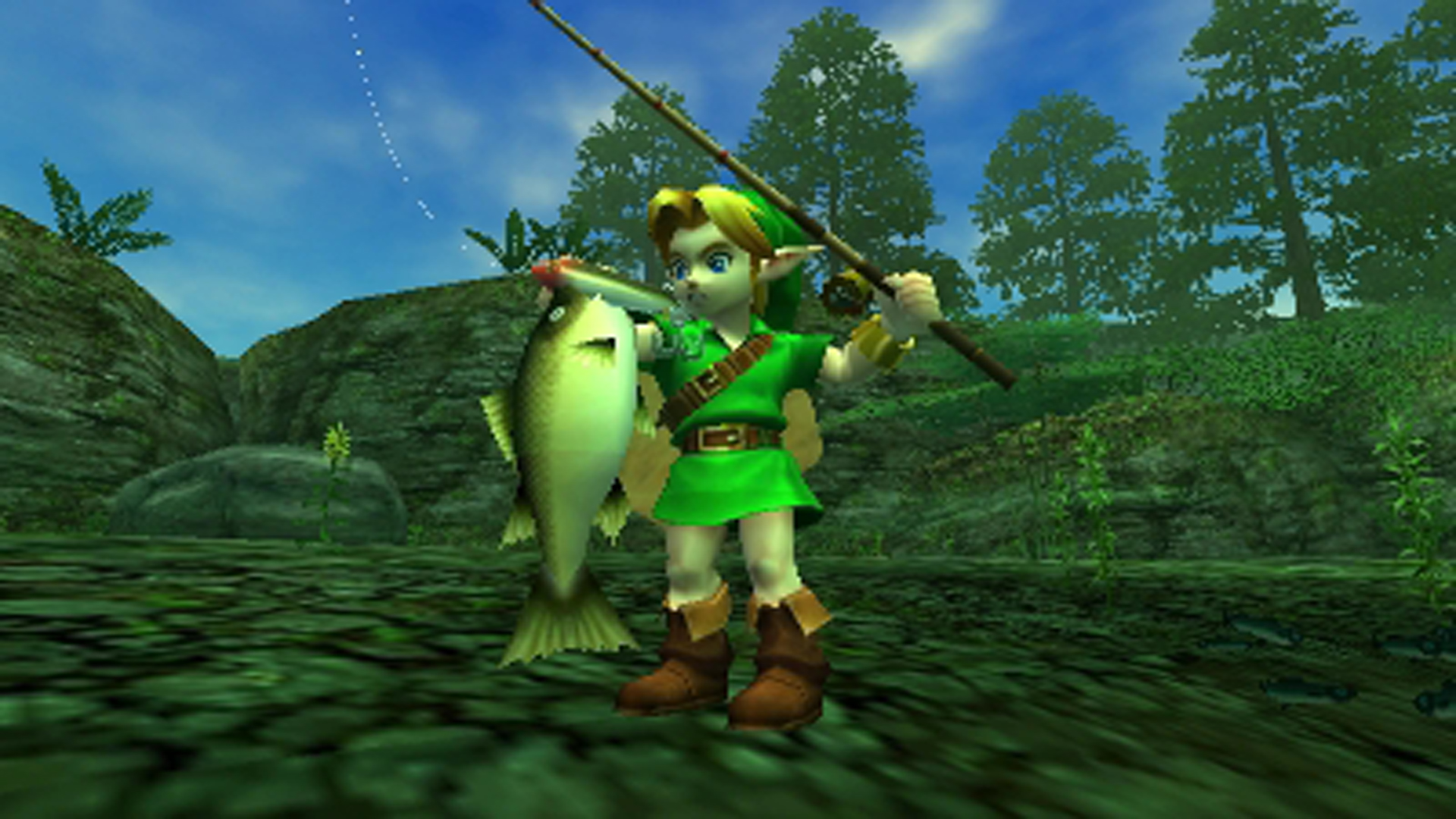
While there can be no question that the original Legend Of Zelda was a true watershed moment for video games, and Ocarina owes it a sincere debt of thanks for putting the core pieces in place, it was merely a small portion, a compromise if you like, of what series creator Shigeru Miyamoto had actually envisioned for Link, Zelda, Ganon and the land of Hyrule. Since Ocarina's release, Zelda's creator has revealed that Ocarina Of Time marks his true original vision of the world – it is the land of Hyrule he imagined, finally brought to life.
Back in 1986, when that first game in the series was released, technical constraints meant Miyamoto could only project the core themes of Zelda on the screen – staples such as the three central characters, the Triforce, Hyrule, the sense of freedom, and of course, the dungeons. And as early as its first sequel, it was clear Miyamoto was beginning to think more about how, having smashed the pegs into the ground, he could start erecting his true image for Hyrule using the modest powers of the NES.
Zelda 2: The Adventure Of Link, while widely branded as the 'black sheep' of the series, shares several similarities with the franchise's golden calf. The sequel added side-on platform sections that transported gamers into the heart of Hyrule, with this new viewpoint used to create village sections filled with people with which Link could interact and converse with during his quest. Not only would this help to breathe a greater sense of life and immersion into the world, but also weight a greater sense of responsibility on the shoulders of the player, too.
The first sequel also had a stronger emphasis on action. Link could now cast spells (in Ocarina Of Time, Link can do the same, and a new magic meter enables the hooded hero to perform special charge attacks) and earn experience points to improve his attacks. While this levelling up mechanic was promptly dropped by the series soon after, this aspect of character development still played a big part in Ocarina Of Time's design - just now it was done by the far more interesting means of acquiring new gadgets, items, additional heart containers and better weapons during the quest.
Weekly digests, tales from the communities you love, and more
A Link to the Past

But while Ocarina appears to take lessons from The Adventure Of Link, the game also borrows a number of popular ideas and themes from other sequels, too. The ocarinas, for example, which play a big part in helping you progress in the story, made their first appearance in the Game Boy game Link's Awakening, while A Link To The Past's dark and light realms also returned, with Link ageing seven years in the game to see the devastating effect Ganondorf’s rule has had on the kingdom of Hyrule.
Ocarina Of Time was first unveiled at Nintendo's Space World event in December 1995. Shown to a floor of astonished and excited attendees, Nintendo announced that the game would be ready in time to become a launch game for its successor to the Super Nintendo, the Nintendo 64. But with the launch just a year away, that projection proved a little ambitious. Ocarina Of Time didn't actually appear until the end of November, two years after the launch of the N64 in Japan, following a string of delays.
Designed on a heavily altered version of the Super Mario 64 engine, Ocarina's creation was handled by Nintendo's EAD branch, with different parts of its creation overseen by various teams headed up by different directors. Each team focused on areas such as scripting and story scenarios, Link’s actions and camera controls, and coming up with the various items for the player to use in the game. As the development progressed, further teams were added, overseeing aspects such as sound and special effects in the game.
Finally, Kensuke Tanabe, writer on A Link To The Past, returned once again to pen the script for the game based on a story idea that had been hatched by Shigeru Miyamoto and Yoshiaki Koizumi. Working as producer and supervisor, Miyamoto oversaw the overall production of the game, giving ideas to the directors to develop and also it was his responsibility to see that all the individual components came together. Once Super Mario 64 was released in 1996, Miyamoto was able to concentrate on Zelda to help the teams complete the game. When the project started, the developers working on the game numbered around 15; by the time it neared completion, this number had swelled to an impressive (for the time, at least) 50.
In control

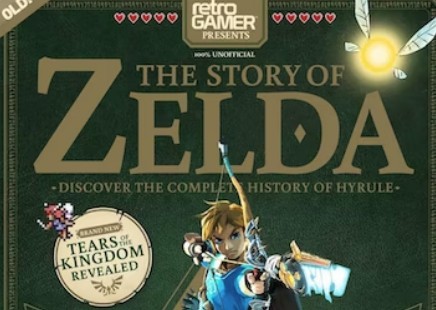
The larger development team helped, of course, however, several inescapable issues delayed Zelda's first Nintendo 64 release. As well as its development moving across to the 64DD at one stage (with the plan to make it a launch game for the N64 disk-drive add-on), when thinking of how best to fully immerse the player in Hyrule like never before, Miyamoto had originally wanted the game to play out entirely in first-person. This idea, however, was dropped after it was decided that during the game the player would control Link both as a boy and then as an adult, and the idea would have lost much of its impact if Link remained out of sight for the majority of the adventure. Surprisingly, the game's memorable story was actually incorporated and finalised at the latter stages of the game’s design.
In keeping with the focus on immersion and displaying the land of Hyrule in the best possible way, it was Miyamoto's intention that the camera in the game had a spotlight on Hyrule rather than Link and his actions. This decision made logical sense in the adventure game setting. In Mario 64, players benefited greatly from having fluid and clear sight over Mario at all times, helping them to get accustomed to his new abilities and negotiate platform sections in a new 3D space. It was decided that such requirements were not necessary for a Zelda game. Since the release of The Legend Of Zelda, Miyamoto had always wanted to make players feel as if they were really inside Hyrule. With the N64 giving him the power to do this, Miyamoto and his teams thought about how best to make the player feel fully immersed in its world. And, in finding their answer, they came up with another of Ocarina Of Time’s best aspects: the controls.
To say the controls in Ocarina are attuned perfectly to the game world better than any 3D game that has come before or since is no exaggeration. Making full use of the crazy number of buttons on the Nintendo 64's unique controller, Link was able to effortlessly navigate Hyrule. Simple but very effective inclusions made the game instantly accessible to all – such as having Link jump automatically whenever he was steered off the edge of a platform (considerately saving you the obvious job), and a context-sensitive A button which could be used to make Link wave his sword around, open doors, move objects, climb platforms, and converse with Hyrule's many memorable characters.
Similarly, using items and viewing the world was made a breeze thanks to the clever use of the controller's yellow C (camera) buttons. In third-person mode, items could be assigned to them to enable easy and immediate access during the game, while in first-person mode the same buttons offered total control over the game’s camera to help you get your bearings and offer precision aiming for weapons such as the slingshot and boomerang. Combat, like everything else in Ocarina Of Time, was also made incredibly simple thanks to an innovative new combat system the game introduced that was called 'Z-targeting'. An automatic aiming mechanic for Link's projectile weapons, it has since become a combat staple in video games and has been used in many games across many different genres and franchises.
In addition to the game's obliging control scheme, players were also aided on their quest by a fairy helper called Navi. Acting as your guide throughout the adventure, and never away from Link's side, she would point out points of interest during the game as well as offer useful hints and suggestions to help you complete puzzles. Every aspect of Ocarina felt well-considered; it was like the game was trying its hardest to make your stay in Hyrule as pleasurable as possible, so that you'd tell all of your friends to pay it a visit, or maybe even decide to return to it yourself.
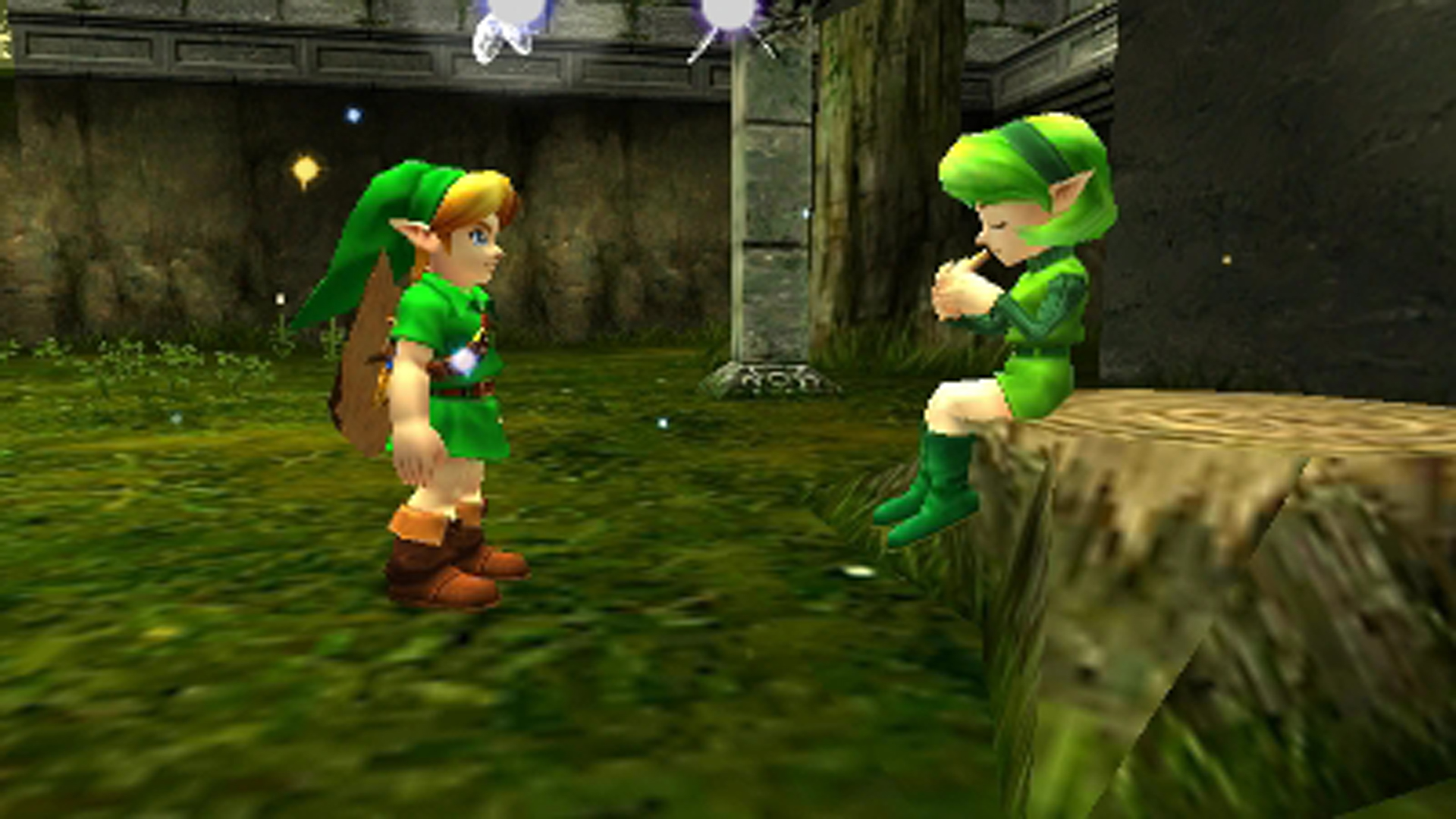
"Like that scene in Back To The Future 2, where Marty McFly returns to a bleak reality in which Biff has become a casino magnate, it's an effective plot device that shows the hero an important glimpse at what his future will be should he fail to put things right."
The story of Ocarina Of Time is set before the events of the first four games in the series, and sticks to the traditional Zelda template. Link must venture into a series of enemy-filled dungeons, find a desired object and then make his escape by defeating a gargantuan boss blocking the exit route. However, Ocarina, like A Link To The Past before it, is split into two very distinct sections. The first, which is set in a lush and vibrant-looking depiction of Hyrule, sees Link as a young boy, under orders from Princess Zelda to retrieve three Spiritual Stones that will grant him access to the Sacred Realm where the Triforce is kept.
Simply getting to this point can take players a good amount of time – especially if they embark on many of the sidequests - but this is less than halfway through the adventure. Upon unsealing the Sacred Realm, Ganondorf pilfers the Triforce and Link is sealed away and must work out how to escape. It is once you reach this point that events take a dramatic turn. Seven years pass by, and when Link awakens he is met by one of seven sages whose job is to protect the Triforce. Now a young adult, Link learns that Ganondorf has used the Triforce to cast the kingdom of Hyrule into darkness. Hope now rests with Link reawakening five dormant sages, by travelling to five temples in Hyrule to defeat Ganondorf's monsters and break his evil spell.
If he succeeds, the sages can trap Ganondorf inside the Sacred Realm and restore the kingdom of Hyrule to its original state. The moment that Link steps outside and sees the effects Ganondorf's reign has had on Hyrule - sapping it of all life, colour and beauty and turning it into a dark, depressing, shrivelled-up shell of its former self - is one of Ocarina Of Time’s many rug-pulling moments. Future Hyrule looks ashen and volcanic; the walking dead replace the fizzy townsfolk, and Kokiri Forest is overgrown with deadly flora and fauna – no longer a safe haven for Link, but the perfect place for evil to thrive.
Like that memorable scene in Back To The Future 2, where Marty McFly returns to a bleak and unwelcoming image of the present in which Biff has become a casino magnate, it's an effective plot device that shows the hero an important glimpse at what his future will be should he fail to put things right. In Ocarina Of Time, the effect is used just as evocatively, spurring the player on to complete their quest and put things right.
Indeed, paying a return visit to many of the familiar locations around Hyrule at this point kicks up a number of surprises for Link and the player. Lon Lon Ranch, the stables where Link finds and (once an adult) wins his trusty horse Epona, is now under new ownership. Walking through its tall gates expecting to find a friendly face, Link learns that its original proprietors, Talon and his daughter Malon, have been mercilessly booted out of their home by Ganondorf, and its ownership has now been handed to Talon's deceitful stablehand, Ingo.
This and many other changes for the worse you learn about quickly add mounting weight to the quest, as you see not only the important but also the personal effects of your actions.
Exceeding expectations
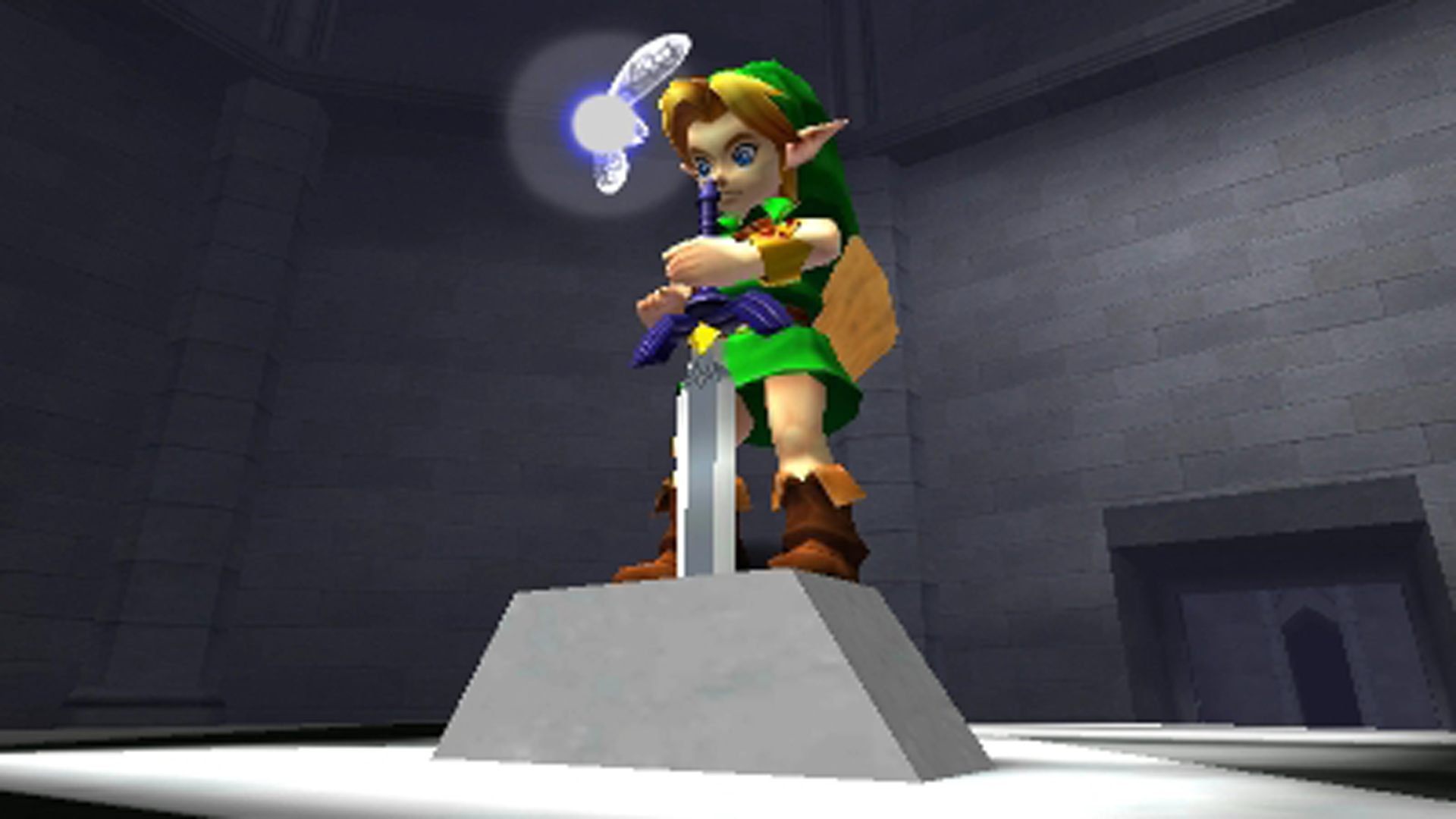
With its numerous delays, an almost-switch of platform, and also taking that sometimes tricky step up to 3D, it would be fair to say that Ocarina Of Time exceeded almost everybody's expectations at the time, achieving incredible reviews. Nintendo not only appeased long-standing fans of its popular franchise by delivering a brand-new 3D Zelda game to surpass the lofty eminence of its 16-bit masterpiece A Link To The Past, but also managed to attract a whole new audience to the franchise by delivering one of the greatest adventure games to ever see release.
Garnering high acclaim and rave review scores across the board, and making history by scoring the first ever 40/40 in Weekly Famitsu, the only other game sequels to have ever had the same kind of impact are perhaps Street Fighter 2 and Nintendo’s very own killer app, Super Mario 64.
If we want to be incredibly picky, we'd say that there are some weaker aspects of Ocarina Of Time that don't live up to the majesty displayed elsewhere, and which leave it looking and feeling fairly dated today. For example, at points, it's not made explicitly clear where you should be going next in the game, and there are sections that only open up to you on the completion of some pretty baffling criteria - such as cleansing a room entirely of bats (which can sometimes mean that the odd wayward one can leave you stumped), or having two conversations with the same character in quick succession.
Don't even get us started with the swimming mechanics or the legendary frustration of its slow-motion Water Temple dungeon. However, its lush, beautiful 3D world, fluid controls, masterful storytelling, game design and incredible pacing make it as perfect a game as you could probably ever hope to play.
Influential impact

That its influence and popularity can still be felt to this day is a mark of its impact and legacy. Having already been re-released twice before, first with Ocarina Of Time: Master Quest for GameCube in 2003 – a revision of the game featuring new puzzles and tougher dungeons to tackle – and then for Virtual Console, the game was once again thrust back into the spotlight with a new remastered - and, dare we even say, definitive - edition for the 3DS.
As well as rendering the Hyrule in stereoscopic 3D, Ocarina Of Time 3D has made subtle improvements to the gameplay, full use of the console's in-built touchscreen for item selection, and gyroscopic technology to offer motion-controlled aiming. It also came packaged with both the original Nintendo 64 and Master Quest editions of the game, as well as a brand-new boss rush mode for fans to hone their Z-triggering skills with. In short, it's a superb update of a classic game that highlights just how far ahead of the curve the original N64 classic was at the time.
Clearly proud of what it achieved with Ocarina Of Time - creating one of the most enchanting and perfect game worlds, and setting an early benchmark for all 3D adventures that has still yet to be bettered in any meaningful way - Nintendo must have hoped the 3DS version would encourage those who missed the game first time around to pick up and experience one of its most finest and accomplished video games. The muddy Nintendo 64 visuals may have lost some of their magic since the game was originally released, but that’s never been Zelda's formula for success and it never will be, as Zelda: Breath Of The Wild proved when the Nintendo Switch launched.
As we said at the start, the mark of whether a game is good or not is always judged by reflecting upon the journey it's taken you on. No game series on any format proves that better than Zelda, and few games, if any, offer a journey as magical, memorable and timeless as Ocarina Of Time. It remains as enchanting to play now, as it did the very first time we experienced it. A true video gaming classic in every possible way, we'll never get bored of it.
Keep up to speed with all of our celebratory Zelda coverage with our The Legend of Zelda celebration hub


